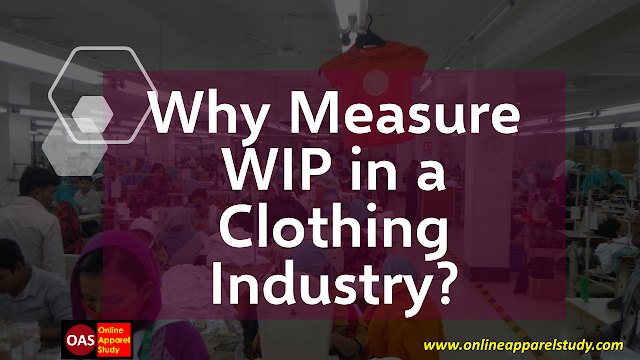In the
manufacturing industry, work in progress (WIP), also known as work in process,
is inventory that has begun the production process and is no longer included in
raw materials inventory but has not yet been transformed into a finished
product. Work in progress is treated as an asset on a balance sheet since money
has been spent in the process of creating a finished product.
In the
garment manufacturing industry, work in progress (WIP) is typically expressed as
a quantity of garments. Production work in progress (WIP) is measured on a
daily basis in a garment factory by either the production department or the
industrial engineering department.
Reason of
measuring WIP
A certain level of work in progress
(WIP) at each sewing workstation is required to provide workers with continuous
activity. In contrast, neither a high nor a low work in progress (WIP) is
beneficial to a manufacturing operation.
Here are a few reasons for which the factory needs to produce WIP.
✔ Measuring
WIP is important to know how much in-process garments have in the line.
✔ To determine
whether a line (or a workstation) has a high or low WIP level in comparison to
the targeted/planned WIP level
✔ If any line
fall below the WIP label then line will be hampred in next day, so need to know
the WIP every day.
✔ To reduce
unnecessary WIP and keep up minimum WIP.
✔ High work in
progress (WIP) is the root cause of a wide range of problems, including poor
quality, low productivity, and unnecessarily long production delays. So need to
know the current WIP to make it minimum.
✔ The factory
can plan for the amount of work that will be required the following day by
measuring the WIP.









Post a Comment
0 Comments